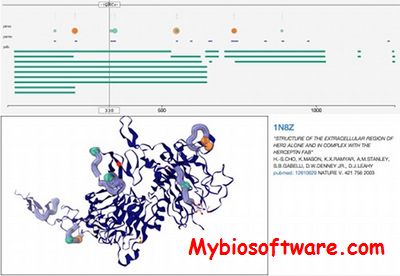UProC 1.2.0
:: DESCRIPTION
The UProC (ultrafast protein classification) toolbox implements a novel algorithm (“Mosaic Matching”) for large-scale sequence analysis and is now available in terms of an open source C library. UProC is up to three orders of magnitude faster than profile-based methods and achieved up to 80% higher sensitivity on unassembled short reads (100 bp) from simulated metagenomes. UProC does not depend on a multiple alignment of family-specific sequences. Therefore, in addition to the protein domain classfication according to the Pfam database, UProC can, in principle, also provide the detection of KEGG Orthologs
::DEVELOPER
:: SCREENSHOTS
N/A
:: REQUIREMENTS
- Windows/Linux/MacOsX
- C++ Compiler
:: DOWNLOAD
:: MORE INFORMATION
Citation
Bioinformatics. 2014 Dec 23. pii: btu843.
UProC: tools for ultra-fast protein domain classification.
Meinicke P
